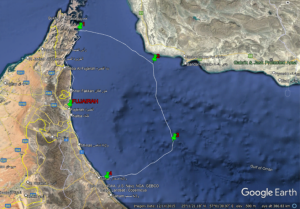
Automated Cloud Estimation in Fujairah: Leveraging Sentinel-3 and K-Means Clustering for Climate Monitoring
Cloud estimation is a crucial aspect of understanding Earth's climate and weather patterns. Clouds play a pivotal role in regulating temperature and influencing energy balance. Traditional methods of cloud observation, relying on human perception, can be subjective and prone to inaccuracies. To address this, automated cloud observation systems using digital image processing have become invaluable.
The Fujairah Research Centre (FRC) has undertaken a significant study titled "Assessment and Classification of Cloud Coverage Using K-Means Clustering Algorithm for the Sentinel-3 LST Data: A Case Study in the Fujairah Region." This study, published in the "American Journal of Remote Sensing," sheds light on the importance of accurate cloud estimation and the methodology employed to achieve it.
The study's focus lies in the 100-kilometer radius off the coast of Fujairah City, UAE. Using data retrieved from the Copernicus satellite data component through the Sentinel 3 LST F2 channel, the researchers leveraged Python packages and the Google Earth Engine for analysis.
The Sentinel-3 mission, designed to measure sea surface topography, temperature, and color, provided crucial data for the study. Land-surface temperature (LST) data, a key climate variable, was utilized to estimate cloud coverage. The satellite data categorized clouds into five combinations, including null areas, non-cloud areas, clouds with moisture, rainy clouds, and dry clouds.
To enhance the accuracy of cloud classification, the researchers implemented the K-means clustering algorithm. A standardized color bar was incorporated into the image processing to mitigate the risk of misclassification. This method ensured precise categorization of cloud cover, addressing the limitations of traditional human observation.
The study's results, published in the "American Journal of Remote Sensing," showcased the effectiveness of the applied methodology. The K-means clustering algorithm achieved a precision rate exceeding 99% for clear weather conditions and 95% for overcast conditions. Monthly analysis revealed varying percentages of rainy clouds, clouds with moisture, and dry clouds, providing valuable insights into the temporal distribution of clouds in the Fujairah region.
The significance of this research extends beyond academic realms. Accurate cloud estimation is crucial for climate prediction, weather forecasting, and understanding regional climatic patterns. The study conducted by FRC contributes to advancing the field of remote sensing and automated cloud observation systems.
In conclusion, the Fujairah Research Centre's study underscores the importance of precise cloud estimation using advanced techniques. The application of the K-means clustering algorithm to Sentinel-3 LST data proves to be a valuable method for assessing and classifying cloud coverage. This research not only contributes to scientific knowledge but also has practical implications for climate monitoring and prediction.
